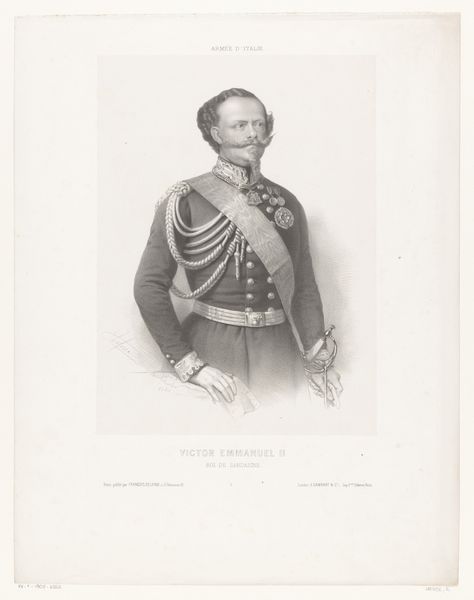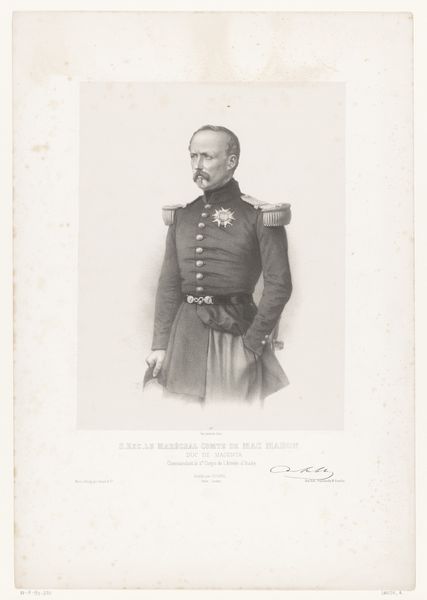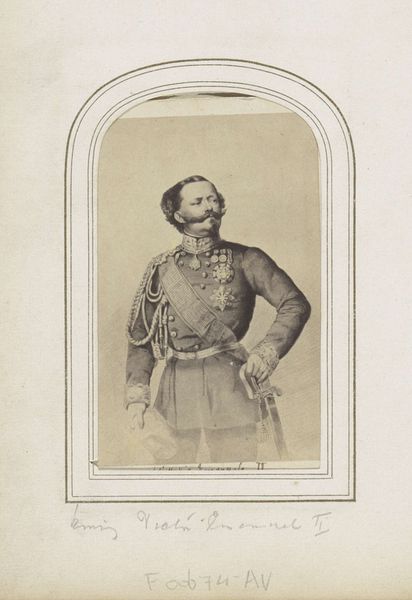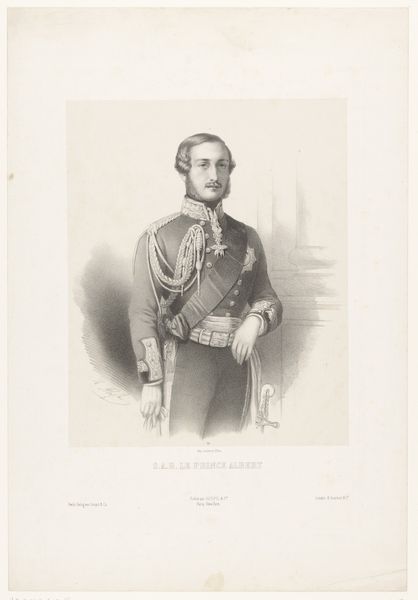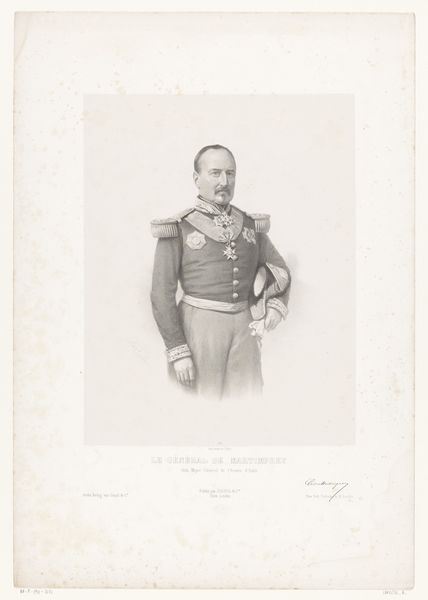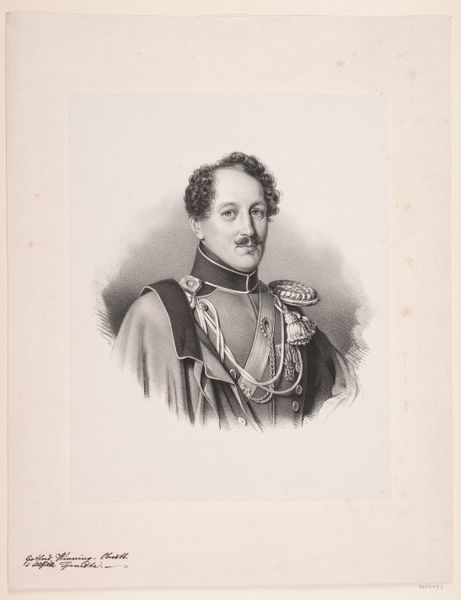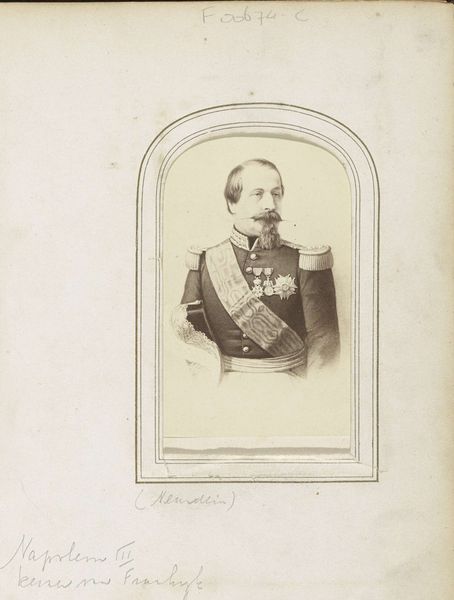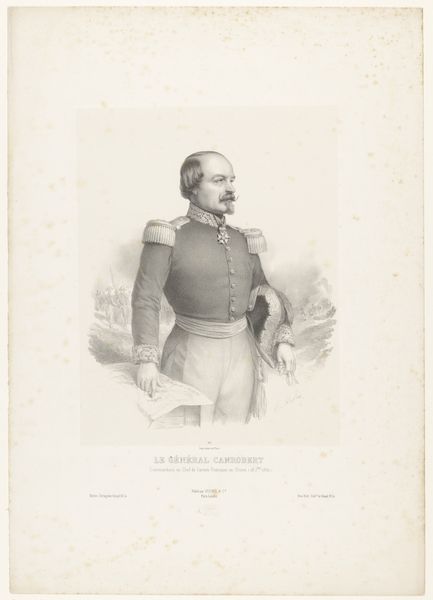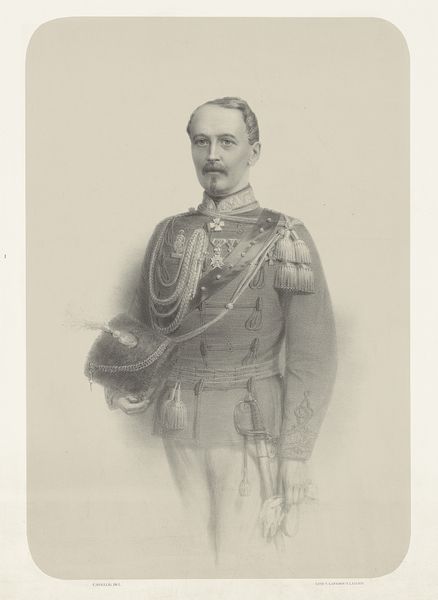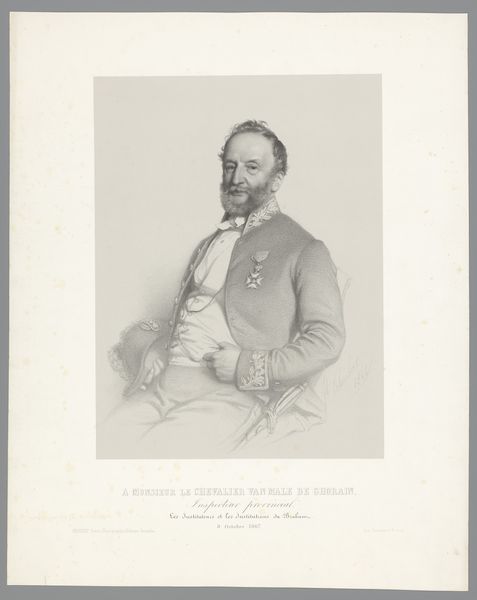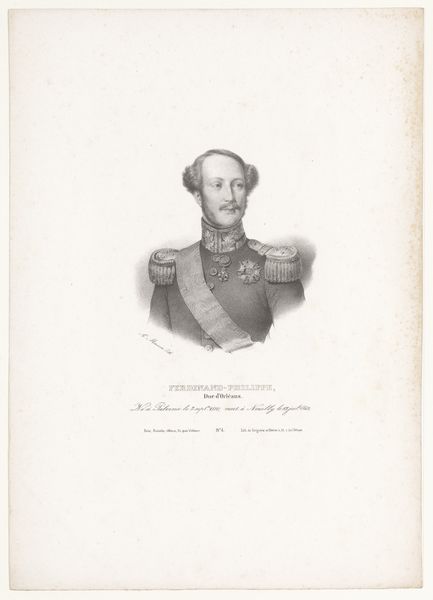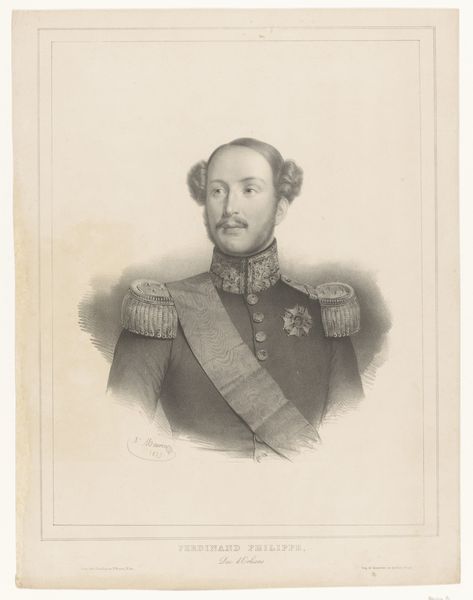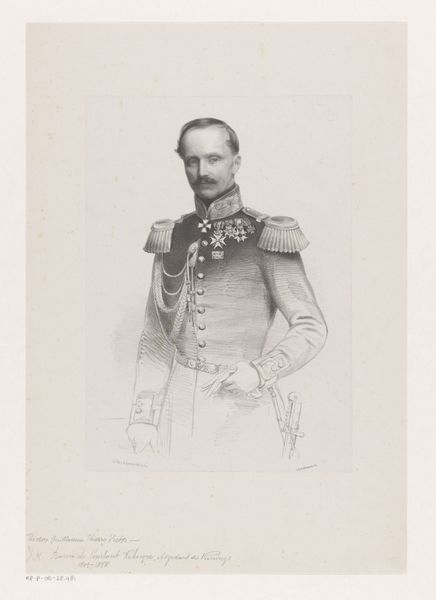
print, graphite, engraving
#
portrait
#
pencil drawn
#
neoclacissism
#
light pencil work
# print
#
pencil sketch
#
old engraving style
#
pencil drawing
#
graphite
#
pencil work
#
history-painting
#
engraving
Dimensions: height 532 mm, width 368 mm
Copyright: Rijks Museum: Open Domain
Curator: Here, we have a lithograph of Victor Emmanuel II, King of Italy, dating back to around 1859, made by Jean-Baptiste Adolphe Lafosse. Editor: My first thought is how the texture of the paper both supports and softens the crisp lines of the figure; it almost feels ghostly in its rendering. Curator: Indeed. The artist utilized graphite and engraving techniques to achieve a precise and neoclassical aesthetic. Consider how the precise lines give form to the King's face, suggesting a calculated authority, a strength carefully constructed. Editor: That's interesting given the printmaking process. How does the mass production allowed by this medium serve as propaganda, distributing a carefully crafted image to reinforce the King’s power? And who were the actual laborers involved in its creation and distribution? Were they perhaps questioning the authority being disseminated? Curator: That delves into questions of reception, a very interesting consideration. I’m focused on the pictorial space, on the layering of detail achieved through controlled gradations. The texture, the pure line – all contribute to a cohesive visual order. Editor: But those very choices serve a material function. The reproducible nature meant these images became incredibly accessible. This is not about timeless aesthetics but immediate communication and political influence achieved through artisanal skill employed toward propagating specific ideology. The paper itself would have been chosen for cost, workability… Curator: Perhaps. What’s irrefutable, however, is the image's overall restraint and its linear grace, harking back to the academic traditions of the time. There’s an intentional flattening of space which enhances the figure. Editor: But isn’t that "flattening" more directly tied to efficiently and affordably communicating an authoritative presence, making him visible everywhere, shaping and molding public opinion using print, paper, and political messaging. Curator: Perhaps we meet somewhere in the middle, appreciating both the intended message and its wider social ripples through artistic application. Editor: An intriguing collision of line, labor, and lionized leadership; plenty for us to consider regarding materials, methods and political intent.
Comments
No comments
Be the first to comment and join the conversation on the ultimate creative platform.
